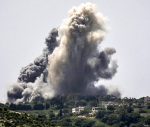You are here
Arab youth at a crossroads
Aug 11,2016 - Last updated at Aug 11,2016
Every day, tens of young men and women from the Arab world take the perilous route to Europe in search of a better future.
Some make it safely to shore, but many die along the way, drowning in the sea or succumbing to fatigue after that.
Today, the average age in the Arab world is 22, an age where school and university years should be behind, and a bright professional and family future should be waiting.
But the reality is less rosy.
The Arab region is among the youngest in the world, with more than one-fifth of Arabs aged 15-24, and has the highest rate of youth unemployment, which stood at nearly 28 per cent in 2014.
According to recent research, unemployment in the region affects both oil-exporting and oil-importing states, and is higher among university graduates: Saudi Arabia’s youth unemployment rate, for instance, stands at 28.3 per cent, whereas Yemen’s is 53 per cent.
It is no secret that unemployment and the ensuing frustration and disenchantment with what is seen as lack of opportunities can be a major drive for unrest.
Statistics show that every percentage point increase in the youth population magnifies the risk of conflict for a given state by 4 per cent.
This prompted the United Nations Security Council, in December 2015, to adopt Resolution 2250, sponsored by Jordan, on youth, peace and security, focusing entirely on the role of young men and women in peace building and countering violent extremism at a time when an estimated 600 million young people live in fragile and conflict-affected settings.
Arab governments have long stated their intention to empower young people and include them in all levels of decision making.
They regularly declare their commitment to ensuring that there are growing numbers of people in the workforce relative to the number of dependents.
With less people of dependent age, the chances for economic well-being of a society increase.
This is what economists call the demographic dividend.
However, an in-depth look at policies on youth across the Arab region raises serious questions about the effective participation of young men and women in the political, economic, cultural and social development of their countries.
It also raises the question of discrimination between men and women in these societies, for, young people, including teenage girls, are still not appropriately empowered, educated or engaged, nor do they have equal access to the labour market.
Although governments recognise the potential of youth in a country, they need to address the root causes of inequalities, instability, vulnerability and insecurity, forced migration, crime, radicalisation, exploitation and terrorism.
Only concrete measures that will give women and young people equal access to education, information and employment will eventually enable entire societies to bloom.
To this end, young people should be able to make informed choices about their health, including sexual and reproductive, as a way of deciding the size of their families and knowing the implications on their well-being.
The winds of change have already hit the Arab region’s patterns on marriage, so people are marrying later than their parents.
Changing marriage patterns reflect both the new policies, such as those setting the minimum legal age for marriage, and the inability of young men and women to achieve the financial stability needed to start families.
Let us imagine a scenario where a growing population of working age contributes to productivity, research, labour market and policymaking.
Let us imagine a young population satisfied with its education, with access to employment and engagement in public life.
Such a population is very unlikely to want to migrate or to seek radical measures to reach a sense of self-worth, and will most likely seek to build peace rather than contribute to upheavals.
To this end, UNFPA facilitates consultations among governments, youth councils, academic institutions and the private sector, to identify the specific needs of young people in the region and respond adequately to four priorities: employability and entrepreneurship, civic engagement, participation and inclusion, health and well-being, and education.
In a fast-changing world, it is important for Arab governments to recognise that social changes are happening even in their own backyards, and that traditional policies are no longer always adequate for non-traditional situations.
Governments need to recognise the ability of young people to drive change, primarily by being able to make informed choices regarding their future, health and well-being.
Arab states need to explore strategies that will directly contribute to the realisation of the sustainable development goals they have committed to achieve by 2030.
In a region that is so young, let us ensure that the energy and power of youth is directed towards development and prosperity, rather than towards disenchantment and unrest.
The writer is UNFPA’s director for the Arab region. He contributed this article to The Jordan Times.












